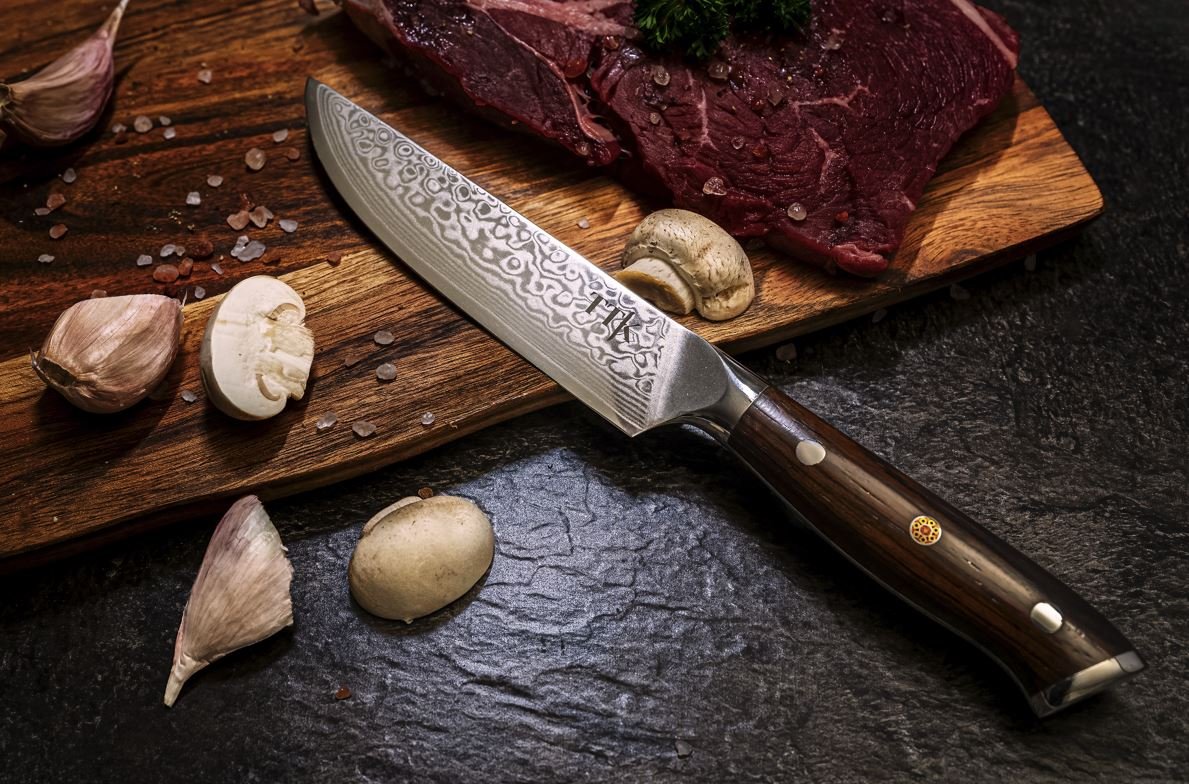If you've ever sliced through a soft loaf of bread with ease, you've probably wondered, what type of blade edge does a bread knife have? It's a question that's surprisingly essential for kitchen professionals, amateur cooks, and bread enthusiasts alike. The secret lies in the unique design of a bread knife, which is tailored to its primary functioncutting through bread effortlessly without squashing it. So let's dive deep into this remarkable cutting technology!

Understanding the Anatomy of a Bread Knife
So, what makes bread knives stand apart from others in your kitchen arsenal? It's all about the blade edge. A bread knife is equipped with a serrated blade edge that resembles the teeth of a saw. These serrations allow the knife to 'bite' into the crust of the bread and cut through it with minimal pressure, preserving the soft, airy structure of the bread's interior. Lets break down its features:
- Serrated Edge: Designed for penetrating tough crusts while being gentle on soft interiors.
- Length: Most bread knives are longer than regular knives, often around 8 to 10 inches, allowing for smooth slicing without tearing or crushing.
- Curved or Straight Shape: Some bread knives feature a slight curve to improve control.
Want to know what knife is used to cut bread? It features these extraordinary traits, making it a must-have for any kitchen professional.
How Does the Serrated Edge Work?
The serrated edge on a bread knife is more than just an intriguing design feature. It's this edge that provides its life-changing performance during cutting. Each serration essentially acts as a small cutting point that can grip the bread's surface, creating controlled tears without requiring excessive force. This helps in:
- Minimizing Crumbs: A serrated edge ensures smoother, cleaner cuts.
- Precision: Handles tough or delicate crusts without compromising the loafs structure.
- Versatility: Works wonderfully on cakes, tomatoes, and other similar textured foods.
If youre curious to explore more on making sharp, precision cuts, feel free to check this guide on sharpening a bread knife with a whetstone.
Why Serrated Edges Beat Straight Edges for Bread
Some people wonder why you just cant use a straight-edged knife for bread. While its possible, a straight blade lacks the efficacy of the serrated edge when handling crusty surfaces. Heres why serrated edges are your best bet:
1. Reduced Pressure: The teeth of the serrated edge allow for a slicing motion, minimizing the need for force that could crush the bread.
2. Extended Longevity: Serrated blades maintain their sharpness longer than straight blades, making them more low-maintenance.
3. Versatility Beyond Bread: Need a knife for that crusty baguette or squishy tomato? A bread knife does it all!
Looking to expand your understanding of knife types? Visit this comprehensive guide to understand the different kinds of kitchen knives and their functions.
Maintaining the Serrated Edge
The thought of maintaining a serrated bread knife may seem intimidating, but with the right approach, its simpler than you think. A useful tip for retaining its sharpness is to use specialized tools. Refer to this step-by-step guide for sharpening a serrated bread knife easily at home.

FAQs
1. Can a serrated bread knife cut through more than just bread?
Yes! Aside from bread, serrated knives are excellent for cutting cakes, soft fruits like tomatoes, and even some vegetables. Check out this knife depot guide to explore its versatility.
2. How often should you sharpen a bread knife?
Given its long-lasting edge, you may only need to sharpen it every few years, depending on usage. Specialized tools make this task easier.
3. Can I substitute a bread knife with a regular chefs knife?
A chefs knife can handle soft bread, but crusty loaves require the serrated design of a bread knife for precise cuts.
As we unwrap the complexities of concerning what type of blade edge does a bread knife have, it becomes evident why its a vital tool for kitchen professionals. Its serrated edge isnt just a design element; its a technology that enhances both functionality and lifespan. Invest in one today and elevate your cutting game!
For more pro tips on knife care and kitchen tools, visit this CNET article on sharpening knives.
This article contains affiliate links. We may earn a commission at no extra cost to you.


























